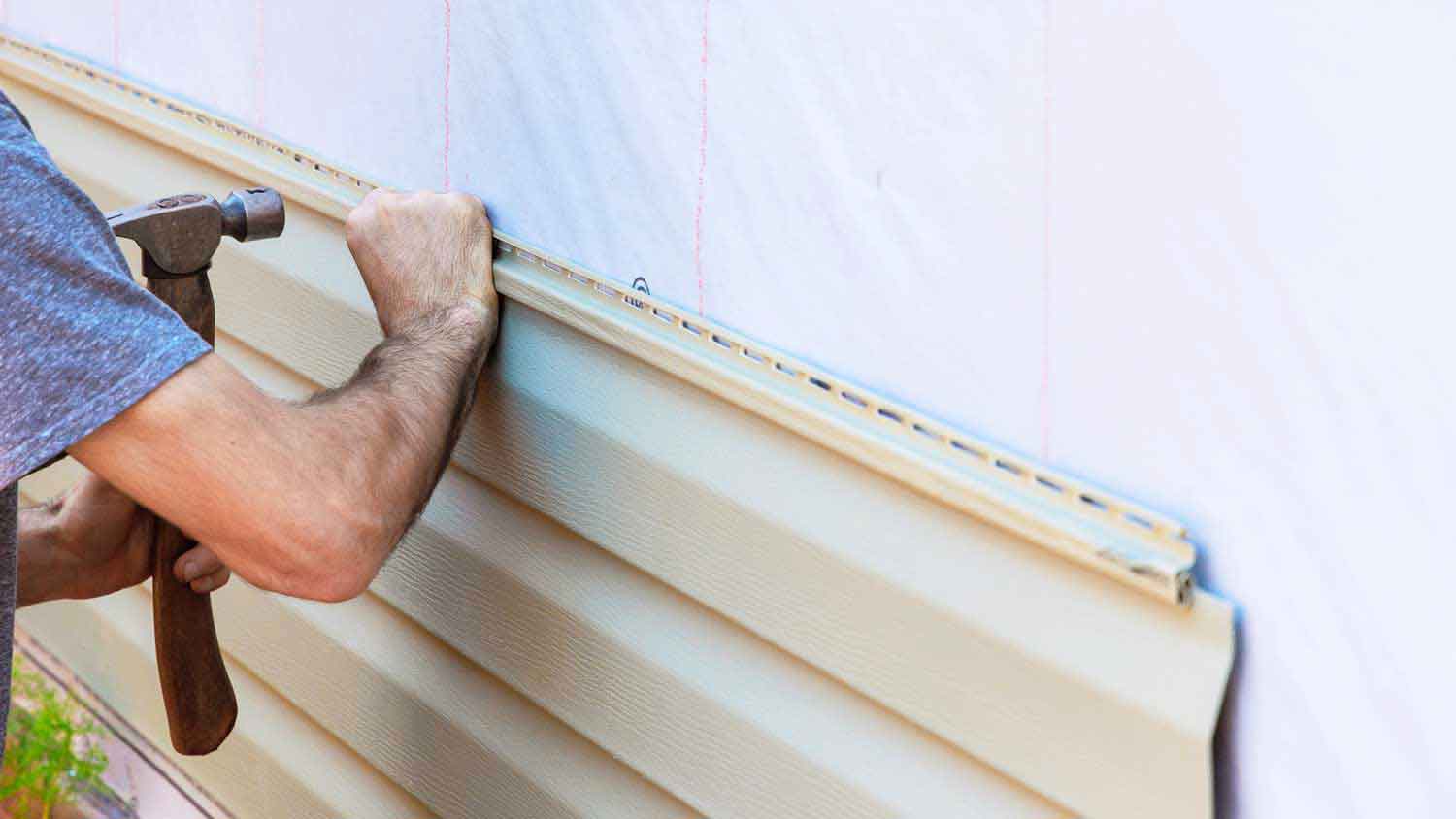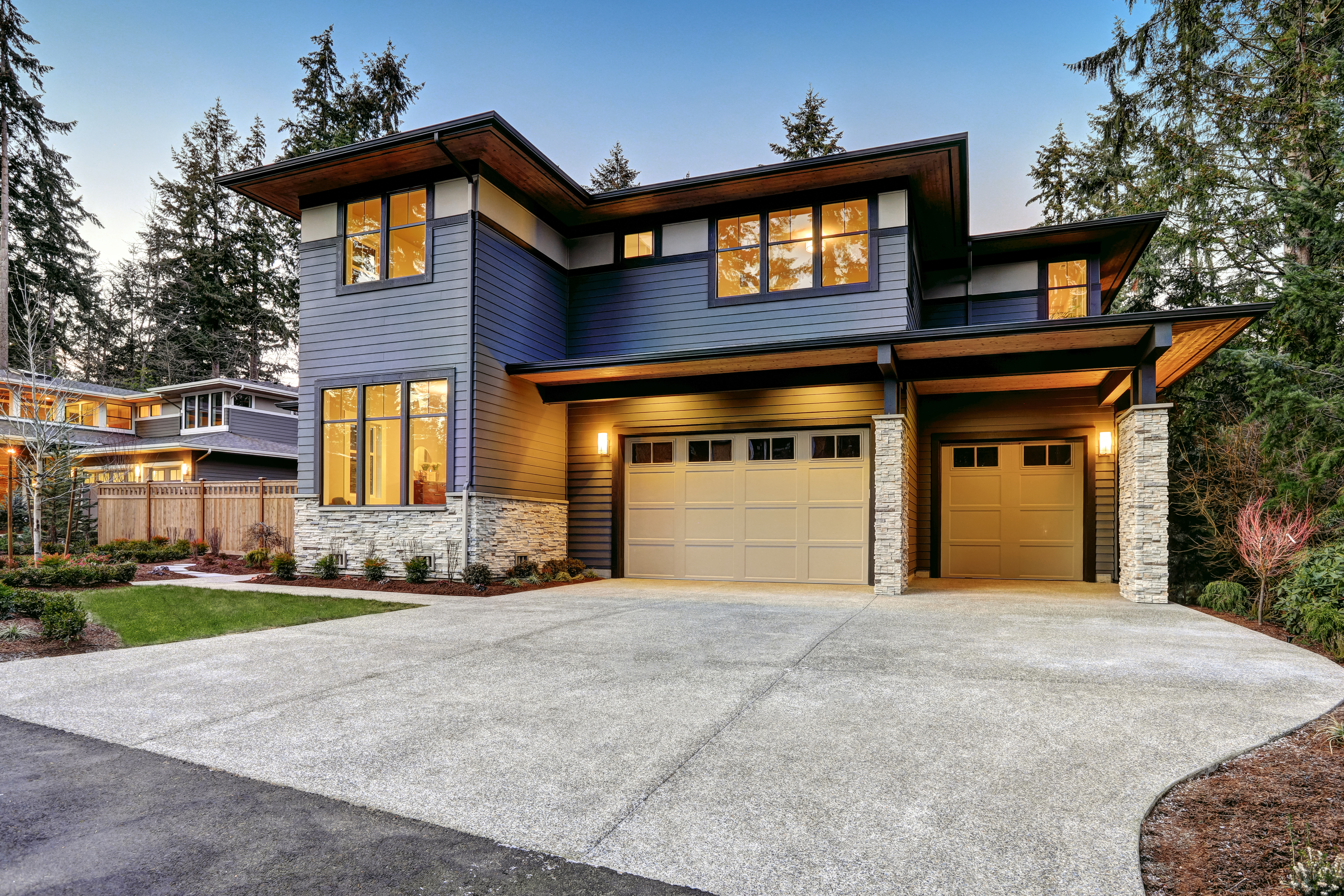
Vinyl siding installation in Seattle costs $13,123 on average. The cost varies from $4,000 on the low end to $25,101 on the high end.
Get the timing right for this project to boost your curb appeal


Siding takes an average of one to two weeks to install.
Installation time depends on weather, old siding removal, house size, siding material, and more.
Any damage discovered underneath old siding can delay the installation process.
Installing new siding is a great way to increase your home’s curb appeal and give it a fresh new look. Knowing what to expect for a siding installation timeline will help you plan accordingly for this project, since it may disrupt your daily routine. We explore how long it takes to side a house and all the factors affecting the timing.
On average, siding takes between one and two weeks to install, depending on the size of your home, the removal process for the old siding, any necessary repairs before installation, weather, and more. The siding installation process takes place in several stages, each of which can affect installation time.
During this stage, you’ll decide on what siding you’re using, and your local siding pro will measure your home, order the siding, and arrange for any necessary permits for siding installation. This stage can happen several weeks before installation begins, since obtaining materials and permits may take some time.
Once everything is ready to go, your contractor will remove your old siding and make any necessary repairs to damaged exterior walls. This process can take one to five days, depending on the complexity of the siding removal process and how extensive any underlying damage is.
Installing the new siding is the most time-consuming part of the process, and can take five to 14 days. Expect a longer timeline if you have a larger-than-average house, a complex house design, or siding material that’s harder to work with.

Every siding installation project will have its own timeline, depending on various factors that may slow down the process.
Your home’s size will significantly affect how long it takes to install siding. Larger homes require more prep and old siding removal time, as well as more installation time. If your home is larger than 2500 square feet, expect a longer installation time unless you’re only doing a partial siding replacement. It may also take longer to install siding if your home’s design is complex and requires a lot of custom cuts to work around architectural details.
Siding installation can be highly weather dependent—if it’s too hot, too cold, raining, or snowing, your installation may need to be delayed until the weather is better. A house can sit without siding for a limited amount of time, so it’s best to plan siding replacement during mild weather when precipitation isn’t in the forecast.
Once your old siding is removed, your home’s exterior may have issues that will need to be addressed before the new siding can be installed. Water damage, mold, pest damage, and rot will need to be fixed, which can add time to your siding installation.
The siding style and material you choose can affect how long it takes to install. Vinyl siding is the fastest to install, since it’s lightweight and easy to cut. Other siding materials like wood, fiber cement, and stone veneer are more complex and can take longer to install.
Unless you have experience removing and installing siding, you’ll want to hire a siding contractor. Installing your own siding can take significantly longer and may damage your home or leave it vulnerable to water intrusion and other problems. A pro will be able to remove your old siding without damage, fix any underlying issues, and install your new siding quickly and correctly.
From average costs to expert advice, get all the answers you need to get your job done.

Vinyl siding installation in Seattle costs $13,123 on average. The cost varies from $4,000 on the low end to $25,101 on the high end.

New siding keeps a Seattle home safe from moisture damage and rot while creating a classic Pacific Northwest aesthetic. Learn about average siding replacement costs in Seattle.

New siding improves curb appeal, increases home value, and insulates your home. Learn about average fiber cement installation costs in Seattle.

Determining how much EIFS costs per square foot is the key to predicting your bottom line when replacing or installing this long-lasting home cladding option.

Learn more about the best types of cement siding and their benefits for your home.

Picking between Hardie board and traditional cement board siding? Our comparison guide will help you decide.